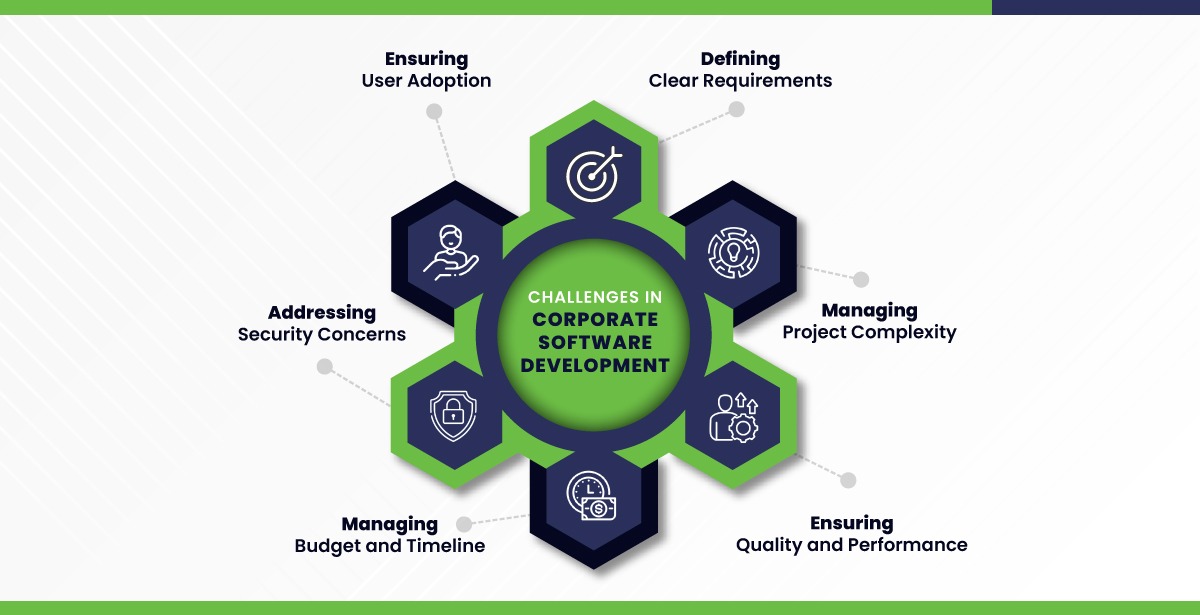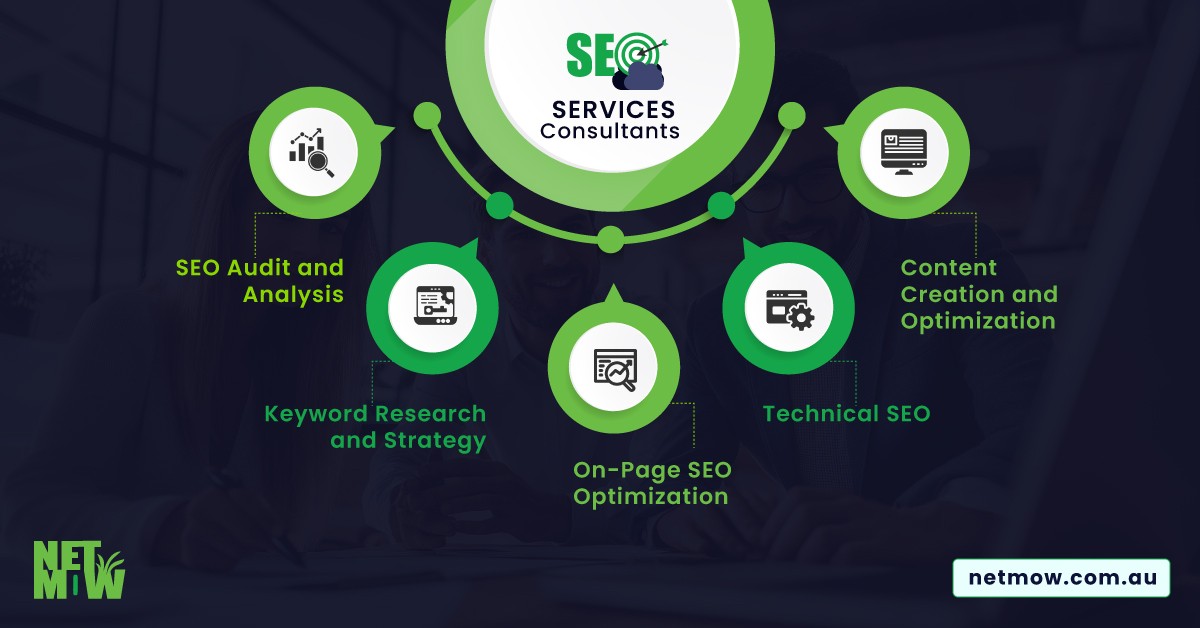
In the modern digital world, businesses are becoming more dependent on technology to improve their operations and remain competitive. Corporate software development is a critical investment that offers the potential to transform business processes, streamline operations, and drive innovation.
What is Corporate Software Development?
Corporate software development involves designing, deploying, and maintaining software tailored to a company’s unique needs. Unlike off-the-shelf solutions, custom software aligns with specific workflows, processes, and objectives, ensuring seamless integration and enhanced efficiency.
Definition and Scope
Corporate software development creates applications addressing specific business problems or opportunities. These solutions range from simple tools to complex systems integrating various functions. The aim is to enhance efficiency, cut expenses, enhance customer service, or support new business models. For instance, companies might develop a CRM system for managing customer interactions or an ERP system for supply chain management.
Key Benefits for Businesses
Investing in corporate software development offers several advantages:
- Efficiency and Productivity: Custom software aligns with business processes, automating tasks and improving efficiency.
- Scalability: Tailored solutions can grow alongside your business, adapting to evolving needs.
- Cost-Effectiveness: Though initial costs may be higher, custom software can reduce long-term expenses by minimising inefficiencies and eliminating the need for multiple applications.
- Competitive Advantage: Tailored software provides unique value, differentiating your offerings and allowing quicker responses to market changes.
To explore more, visit our software development page.
The Corporate Software Development Process
Developing custom software involves several key stages, each crucial for creating a solution that meets business needs. Here’s a breakdown of the process:
Requirements Gathering and Analysis
The first step is defining the software requirements by gathering input from stakeholders. This includes:
- Stakeholder Interviews: Understanding needs and expectations.
- Business Process Mapping: Documenting workflows and identifying areas for improvement.
- Use Case Scenarios: Describing user interactions with the software.
This stage sets the foundation for the project by ensuring a clear understanding of what the software needs to achieve.
Planning and Design
Next, the requirements are translated into a detailed design. Key activities include:
- Software Architecture Design: Defining the software structure and data flow.
- Technology Stack Selection: Choosing technologies, tools, and frameworks.
- UI/UX Design: Creating wireframes and prototypes.
- Project Planning: Outlining the timeline, milestones, and resources.
Effective planning and design help manage risks and ensure the project stays on track.
Development and Coding
With a plan in place, the development team writes the code. Key considerations include:
- Agile Methodologies: Using iterative sprints to allow flexibility and adaptability.
- Collaboration: Ensuring ongoing communication among developers, designers, and stakeholders.
- Quality Assurance: Conduct regular testing, including unit, integration, and system tests.
The software is built and refined during this stage to meet the specified requirements.
Testing and Quality Assurance
The final stage involves rigorous testing to ensure the software functions correctly. This includes:
- Functional Testing: Verifying that all required functions work as expected.
- Performance Testing: Assessing performance under various conditions.
- Security Testing: Identifying and addressing vulnerabilities.
- User Acceptance Testing (UAT): Testing with end-users to ensure the software meets their needs.
Thorough testing ensures the software is reliable, secure, and ready for deployment.
Why Choose Custom Corporate Software Development?
In a competitive business environment, leveraging technology effectively can set you apart. While off-the-shelf software can be suitable, custom corporate software development offers several key advantages:
Tailored to Specific Business Needs
Custom software is designed to meet your unique requirements, providing:
- Customised Features: Tailored functionalities that align with your specific business processes.
- Scalability: Easily adapts to your growing needs without the constraints of off-the-shelf solutions.
- Integration with Existing Systems: Seamlessly integrates with your current tools, enhancing productivity.
Competitive Advantage
Custom software helps you stand out in the market:
- Unique Solutions: Offers capabilities not available in standard products.
- Faster Response to Market Changes: Quickly adapts to market conditions or customer preference shifts.
- Enhanced Customer Experience: Provides a tailored experience that differentiates your business.
Long-Term Cost Efficiency
Though the initial investment may be higher, custom software offers long-term savings:
- Reduced Licensing Fees: Ownership eliminates ongoing costs associated with off-the-shelf software.
- Lower Maintenance Costs: Designed for efficiency, reducing update and support expenses.
- Avoiding Unnecessary Features: Focuses on essential features, optimising your investment.
Improved Security
Custom software enhances security through the following:
- Custom Security Protocols: Tailored protection against specific threats.
- Regulatory Compliance: Developed to meet industry-specific regulations.
- Controlled Access: Complete control over system access and data protection.
Support and Maintenance
Custom software includes ongoing support:
- Dedicated Support: Access to a support team familiar with your solution.
- Continuous Improvement: Frequent updates informed by feedback and technological advancements.
- Proactive Maintenance: Monitoring and addressing issues to minimise downtime.
Custom corporate software development provides a strategic advantage by offering tailored solutions, cost savings, enhanced security, and reliable support.

Challenges in Corporate Software Development
Corporate software development presents several challenges that organisations must address to ensure success. Here’s a look at common challenges and strategies for overcoming them:
Defining Clear Requirements
- Scope Creep: Uncontrolled changes can lead to delays and increased costs. Establish and adhere to a clear project scope.
- Communication Gaps: Miscommunication can lead to misunderstandings. Regular meetings and detailed documentation are essential.
- Evolving Needs: Business needs may change and require software adjustments. Agile methodologies offer flexibility.
Engage in thorough requirements gathering and maintain clear communication throughout the process.
Managing Project Complexity
- Integration Issues: Incorporating new software into existing systems can be challenging. Proper planning and testing are crucial.
- Technology Choices: Selecting the right technologies and tools is critical. Evaluate options and consider future scalability.
- Resource Allocation: Ensure the project has the necessary resources, including skilled personnel and budget.
Break the project into manageable components and employ effective project management practices.
Ensuring Quality and Performance
- Testing Challenges: Comprehensive testing, including functional, performance, and security tests, is necessary.
- Performance Optimisation: Ensure the software performs well under various conditions. Regular monitoring and optimisation are key.
- User Acceptance: Meeting user expectations is crucial. Engage users early and gather feedback.
Implement rigorous quality assurance processes and focus on performance optimisation.
Managing Budget and Timeline
- Cost Overruns: Unanticipated expenses can lead to budget overruns. Proper budgeting and contingency planning are essential.
- Timeline Delays: Delays can impact the project’s schedule. Effective project management and realistic milestones help keep the project on track.
- Change Management: Changes in scope can affect budget and timeline. Implement a structured change management process.
Establish clear budgets and timelines and monitor the project’s progress closely.
Addressing Security Concerns
- Data Protection: Protect sensitive data from unauthorised access by establishing strong security protocols, including encryption and access controls.
- Compliance Requirements: Ensure adherence to regulations such as GDPR or HIPAA to avoid legal issues.
- Vulnerability Management: Regularly update and patch software to address vulnerabilities.
Prioritise security throughout development and implement best practices to safeguard data.
Ensuring User Adoption
- Training and Support: Provide adequate training and ongoing support to users.
- User Experience (UX): Design user-friendly interfaces and intuitive features.
- Feedback and Iteration: Gather user feedback and make necessary adjustments.
Focus on user training, experience, and feedback to ensure effective adoption.
Choosing the Right Corporate Software Development Partner
Selecting the right partner for corporate software development is crucial for project success. Here’s how to make the best choice:
Define Your Requirements Clearly
- Project Scope: Outline functionalities, features, and goals. A detailed scope helps communicate your needs.
- Budget and Timeline: Establish your budget and timeline to find a partner who fits these constraints.
- Technical Requirements: Identify specific technical needs and integrations.
Clear requirements help in finding a partner capable of meeting your needs.
Evaluate Experience and Expertise
- Industry Experience: Look for experience in your industry or similar projects.
- Technical Skills: Assess proficiency in relevant technologies and programming languages.
- Past Projects: Review their portfolio for insights into capabilities and work quality.
Relevant experience and technical expertise increase the likelihood of success.
Assess Communication and Collaboration
- Responsiveness: Evaluate communication timeliness and clarity.
- Project Management: Check their project management process, including updates and feedback loops.
- Cultural Fit: Ensure alignment in company culture and working style.
Effective communication and collaboration ensure smooth project execution.
Review Client References and Testimonials
- References: Check references from previous clients for insights into performance and satisfaction.
- Testimonials: Review testimonials and case studies for additional perspectives.
Client feedback helps gauge the partner’s reputation and reliability.
Consider Support and Maintenance
- Support Services: Inquire about support services, response times, and scope.
- Maintenance Plans: Ask about maintenance, updates, and bug fixes.
Robust support and maintenance ensure long-term software functionality.
Assess Cost and Value
- Cost Structure: Understand pricing models and additional costs. Ensure transparency and alignment with your budget.
- Value for Money: Evaluate the overall value, including expertise, quality, and support.
Weigh the cost against the value provided to find the best option.
Evaluate Technical and Security Measures
- Development Practices: Review coding standards, testing procedures, and quality assurance.
- Security Protocols: Inquire about security measures to protect data and ensure software security.
Strong technical and security practices safeguard your project and ensure quality.
FAQs on Corporate Software Development
How do I choose the right software development partner?
Select a partner with relevant industry experience, strong technical skills, effective communication, and positive client references. Ensure they provide reliable support and maintenance services.
What are common challenges in corporate software development?
Challenges often include:
- Defining clear requirements.
- Managing complexity with existing systems.
- Ensuring high quality and performance.
- Staying within budget and timelines.
- Addressing security concerns.
What are the key steps in the corporate software development process?
The process includes requirements gathering, planning and conceptualisation, creation, evaluation, implementation, and continuous upkeep and assistance.
What is corporate software development?
It involves creating custom software tailored to a business’s needs, integrating with existing systems, and ensuring scalability to support organisational goals.
Conclusion: The Future of Corporate Software Development
Corporate software development will increasingly influence business success as the digital landscape evolves. Companies investing in custom software are better positioned to adapt, streamline operations, and foster innovation.
To harness these benefits, start with a clear vision and choose a reliable development partner. Whether aiming to optimise operations, gain a competitive edge, or enhance customer experiences, custom software can be transformative.
Ready to advance your software development journey? Netmow is here to help. Our experts will guide you from defining requirements to delivering tailored solutions that achieve your business goals. Explore our services to learn how we can support your software development needs.









